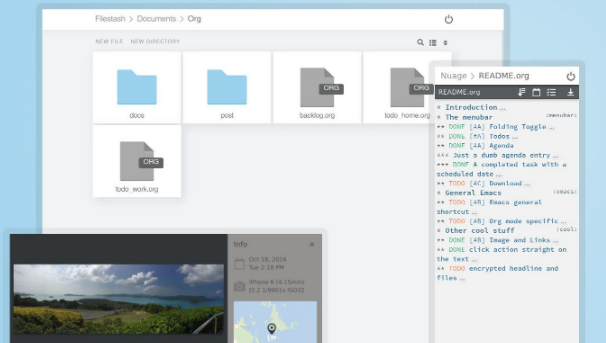Introduction
In today’s digital landscape, businesses and individuals seek secure, private, and efficient ways to manage their files. A self-hosted web-based file manager offers the perfect solution by providing full control, security, and accessibility over file storage. This guide explores everything you need to know, from top options to setup instructions.
What is a Self-Hosted Web-Based File Manager?
A self-hosted web-based file manager is software installed on a personal or business server, allowing users to store, manage, and share files via a web browser without relying on third-party cloud providers.
Benefits of Using a Self-Hosted File Manager
- Enhanced Security & Privacy – Full control over your data.
- Cost-Effective – No recurring cloud subscription fees.
- Customizability – Adapt features to your specific needs.
- Collaboration Features – Secure file sharing within teams.
- No Third-Party Dependencies – No risk of cloud provider breaches.
Top Self-Hosted Web-Based File Managers in 2025
1. Nextcloud
Best for: Enterprises & Privacy-Focused Users
- Open-source and free
- End-to-end encryption
- File versioning and collaboration tools
2. OwnCloud
Best for: Businesses & Team Collaboration
- Flexible sharing options
- Integration with Office & Microsoft tools
- Mobile and desktop sync
3. FileRun
Best for: Individuals & Small Teams
- Lightweight and easy to install
- Google Photos and Office integration
- Drag-and-drop functionality
4. Pydio Cells
Best for: Enterprises & Advanced Users
- Advanced user permissions
- High scalability
- Secure file sharing with encryption
5. Seafile
Best for: Organizations & Research Teams
- Efficient syncing system
- Built-in wiki and document previews
- Secure file sharing
How to Set Up a Self-Hosted Web-Based File Manager
Step 1: Choose the Right Software
Consider factors like security, scalability, and integration options.
Step 2: Prepare Your Server
- Use a VPS (Virtual Private Server) or Dedicated Server
- Ensure the server meets the system requirements (PHP, MySQL, Nginx/Apache)
Step 3: Install the File Manager
Follow installation guides provided by the software.
Step 4: Configure Security Features
- Enable SSL/TLS encryption
- Set up user roles and access controls
- Regularly update the software to patch vulnerabilities
Step 5: Optimize for Performance
- Use caching mechanisms
- Set up automated backups
- Enable compression for faster load times

Comparing Self-Hosted vs. Cloud-Based File Management
| Feature | Self-Hosted | Cloud-Based |
|---|---|---|
| Data Control | Full ownership | Third-party controls data |
| Security | High (self-managed) | Subject to provider policies |
| Cost | One-time or low cost | Recurring subscription |
| Customization | Highly customizable | Limited customization |
| Accessibility | Requires setup | Ready to use |
Common Use Cases for Self-Hosted File Managers
- Businesses – Secure document management and collaboration
- Developers – Storing project files with version control
- Photographers & Creatives – Managing media files efficiently
- Educational Institutions – Private file sharing among staff & students
FAQs
1. Is a self-hosted file manager secure?
Yes, when configured with encryption, access controls, and regular updates, a self-hosted file manager can be more secure than cloud alternatives.
2. What are the system requirements for hosting a file manager?
Most solutions require a Linux or Windows server, PHP, MySQL/MariaDB, and a web server like Apache or Nginx.
3. Can I use a self-hosted file manager for team collaboration?
Yes! Many solutions offer team access, version control, and real-time collaboration tools.
4. Is a self-hosted file manager better than Google Drive or Dropbox?
If you prioritize privacy, data ownership, and customization, self-hosted options are a better choice.
5. How do I back up my data?
Use automated backup solutions like rsync, cron jobs, or cloud backup integrations.
6. Are there free self-hosted file manager options?
Yes, open-source solutions like Nextcloud, OwnCloud, and Seafile offer free versions.
Conclusion
A self-hosted web-based file manager provides the best combination of security, privacy, and flexibility for individuals and businesses. Whether you’re looking for a secure alternative to cloud storage or need advanced file-sharing features, there’s a solution that fits your needs. Choose wisely and enjoy complete control over your files!

